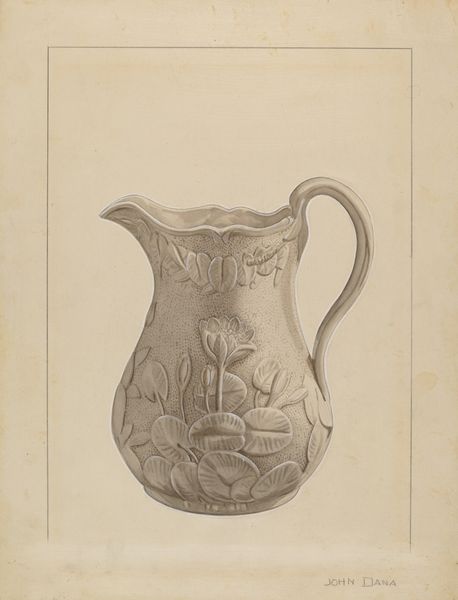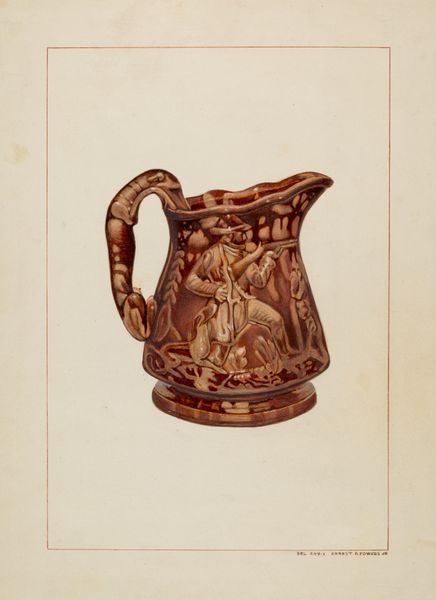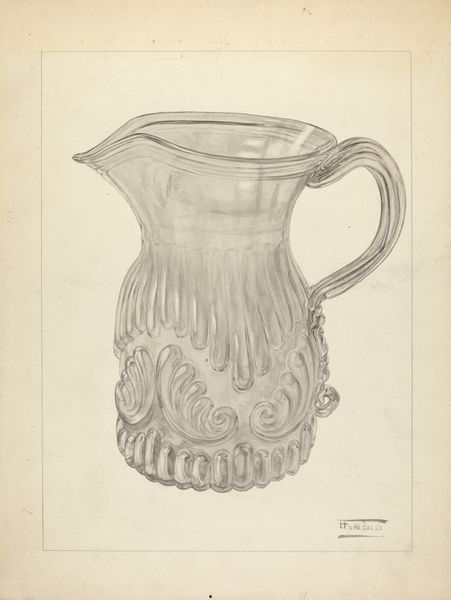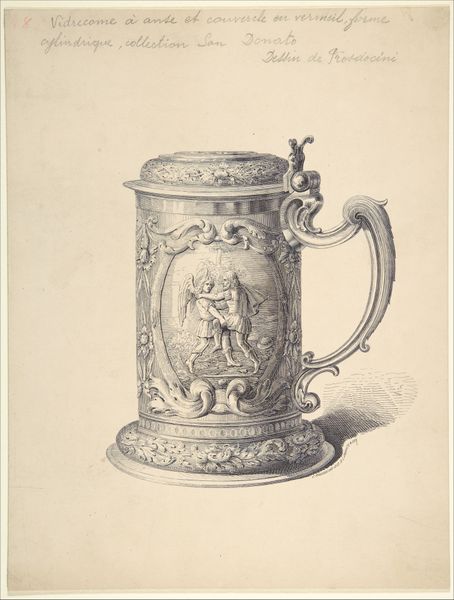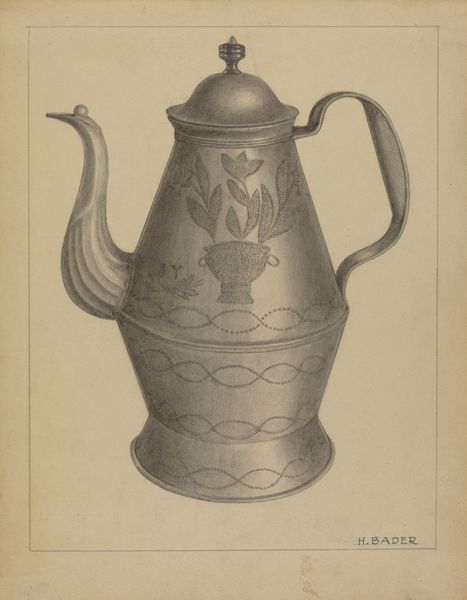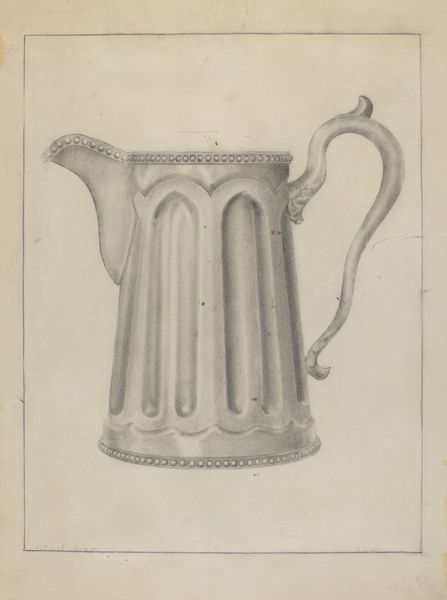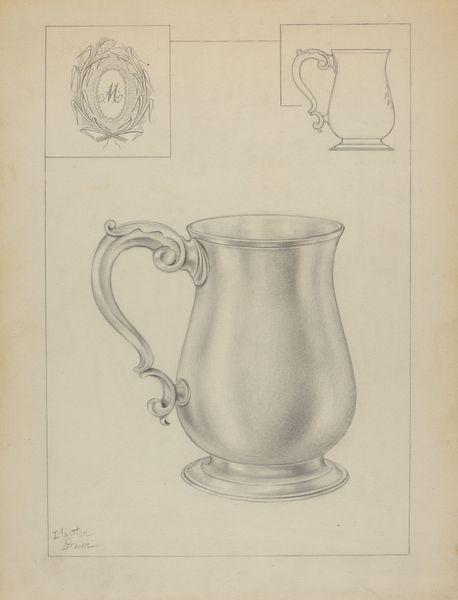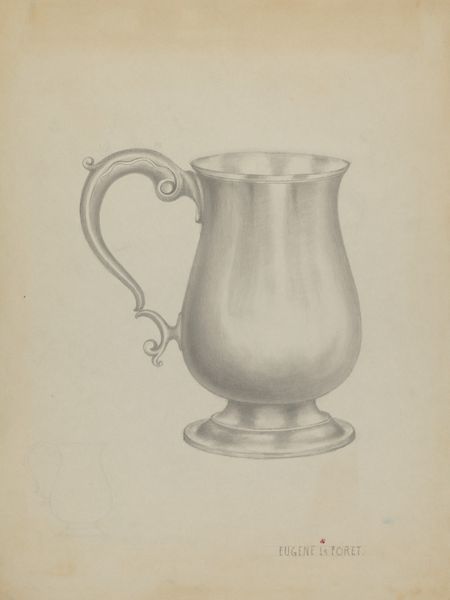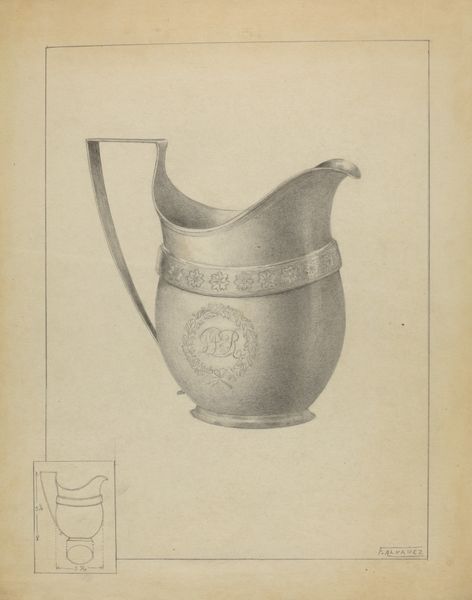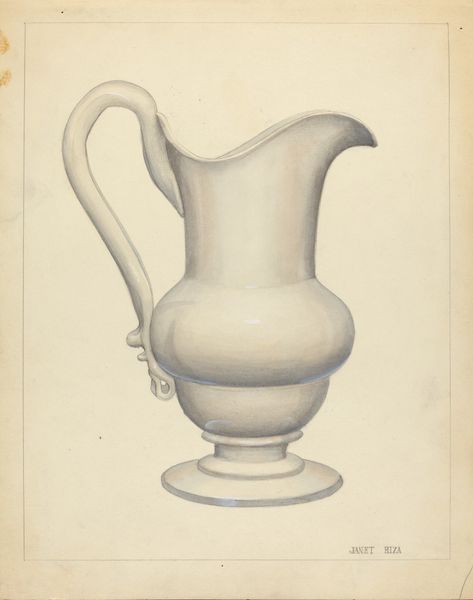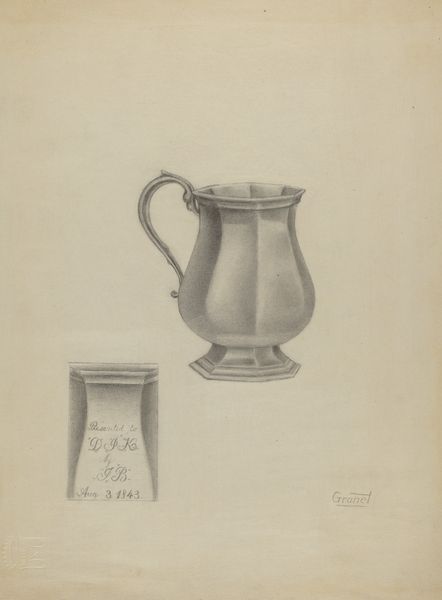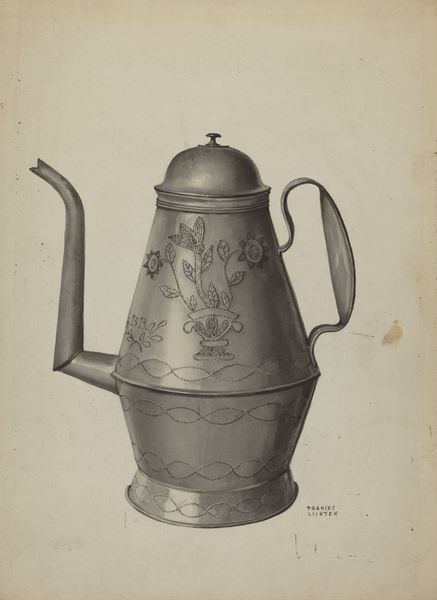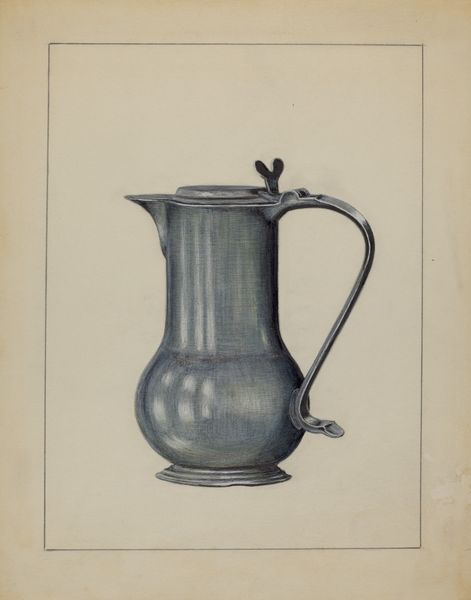
drawing, pencil
#
portrait
#
drawing
#
pencil
#
history-painting
Dimensions: overall: 51.6 x 38.6 cm (20 5/16 x 15 3/16 in.) Original IAD Object: 8 1/2" High 8 1/4" Wide
Copyright: National Gallery of Art: CC0 1.0
Editor: This is "Pitcher," a pencil drawing created by Eugene Shellady in 1937. The craftsmanship seems exquisite! What catches your eye, and how might you interpret it formally? Curator: The use of pencil creates a striking study in tonal variations, wouldn't you agree? Consider the overall form, a common domestic object. The artist elevates it by integrating bas-relief figurative elements, drawing on historical themes of civil history and representation. Note how Shellady exploits the plasticity inherent to pencil to create an illusion of depth, especially on the pitcher’s surface. Editor: That illusion of depth is fascinating, particularly the way the figures almost seem to pop out! Is the medium itself important, the humble pencil giving form to this elaborate scene? Curator: Absolutely. The very act of representing these historical scenes with an accessible and easily handled medium generates meaning. Notice also how the subdued palette draws attention to the formal relationships. Do you notice the deliberate way in which Shellady modulates light and shadow to create a sense of three-dimensionality and movement across the drawing? Editor: I see how the lighting animates the figures, almost making them step off the surface. It makes me think of sculpture too. Curator: Precisely. In essence, this piece questions the distinctions we often make between drawing, sculpture, and even functional object. Shellady collapses those distinctions by prioritizing the manipulation of form. What are your overall thoughts about that decision? Editor: Seeing the piece through a formalist lens gives me a better appreciation for how much an artist communicates simply through composition and the properties of the materials, and de-emphasizing any meaning of civil events on the surface of the pitcher.. Curator: Yes, and by extension, consider how each artist’s engagement and interplay through the piece invites critical conversation and discussion through visual expression!
Comments
No comments
Be the first to comment and join the conversation on the ultimate creative platform.
